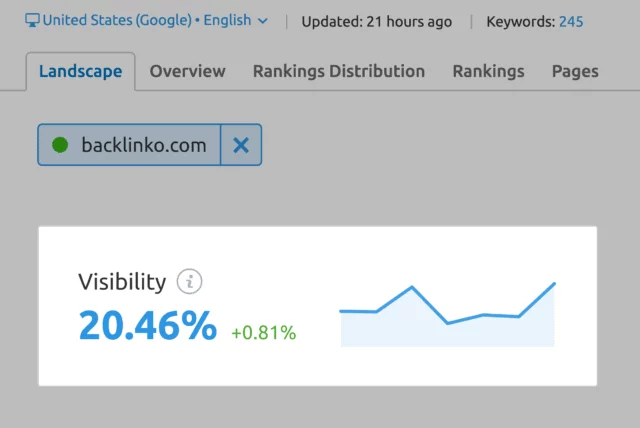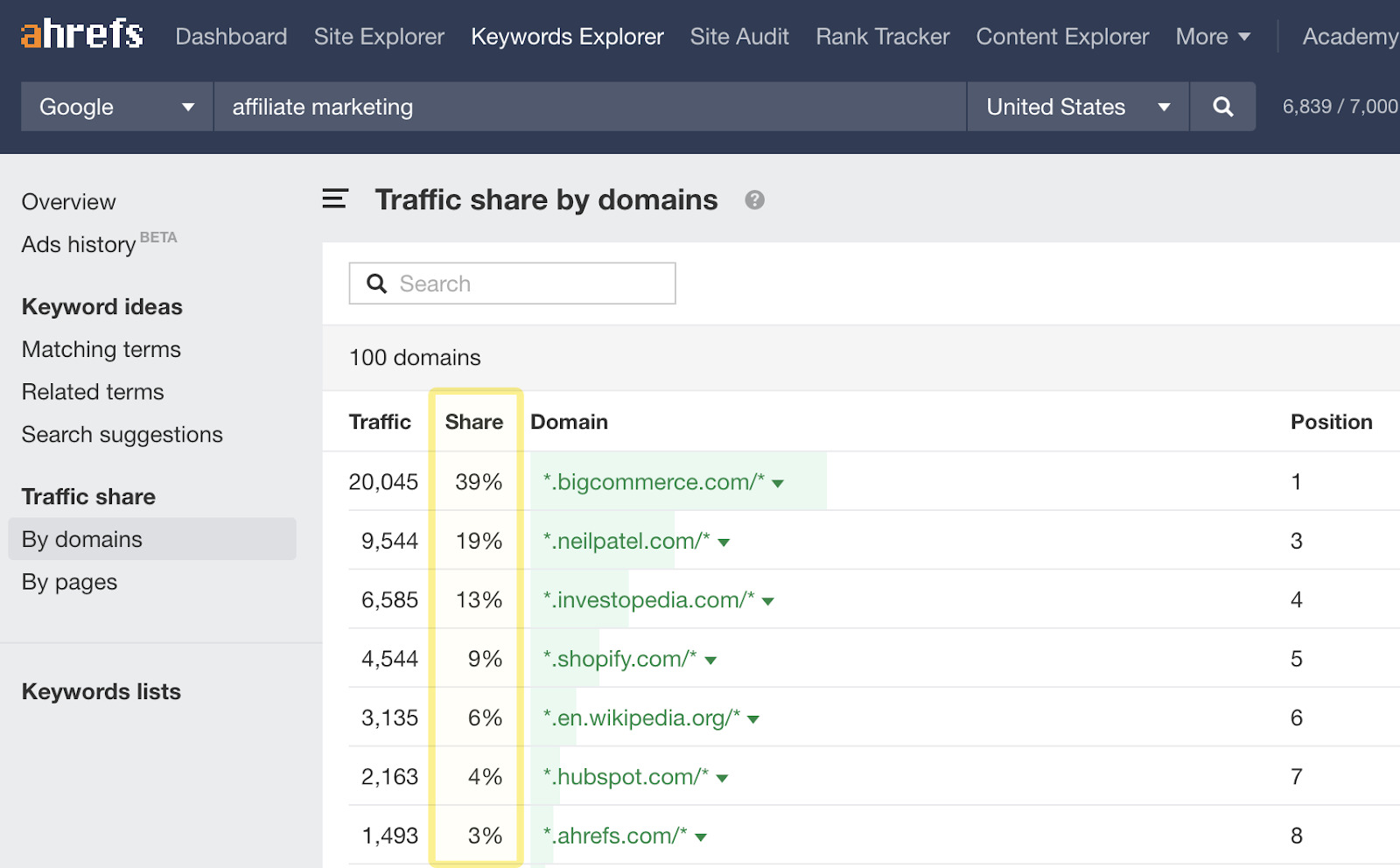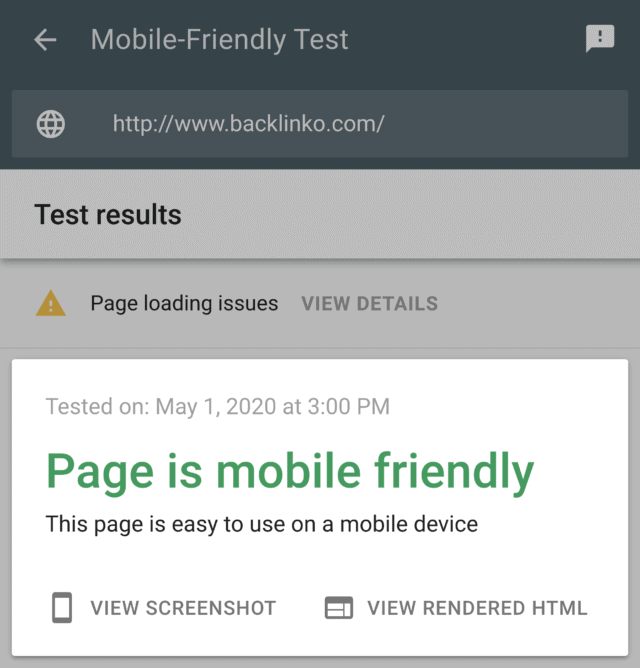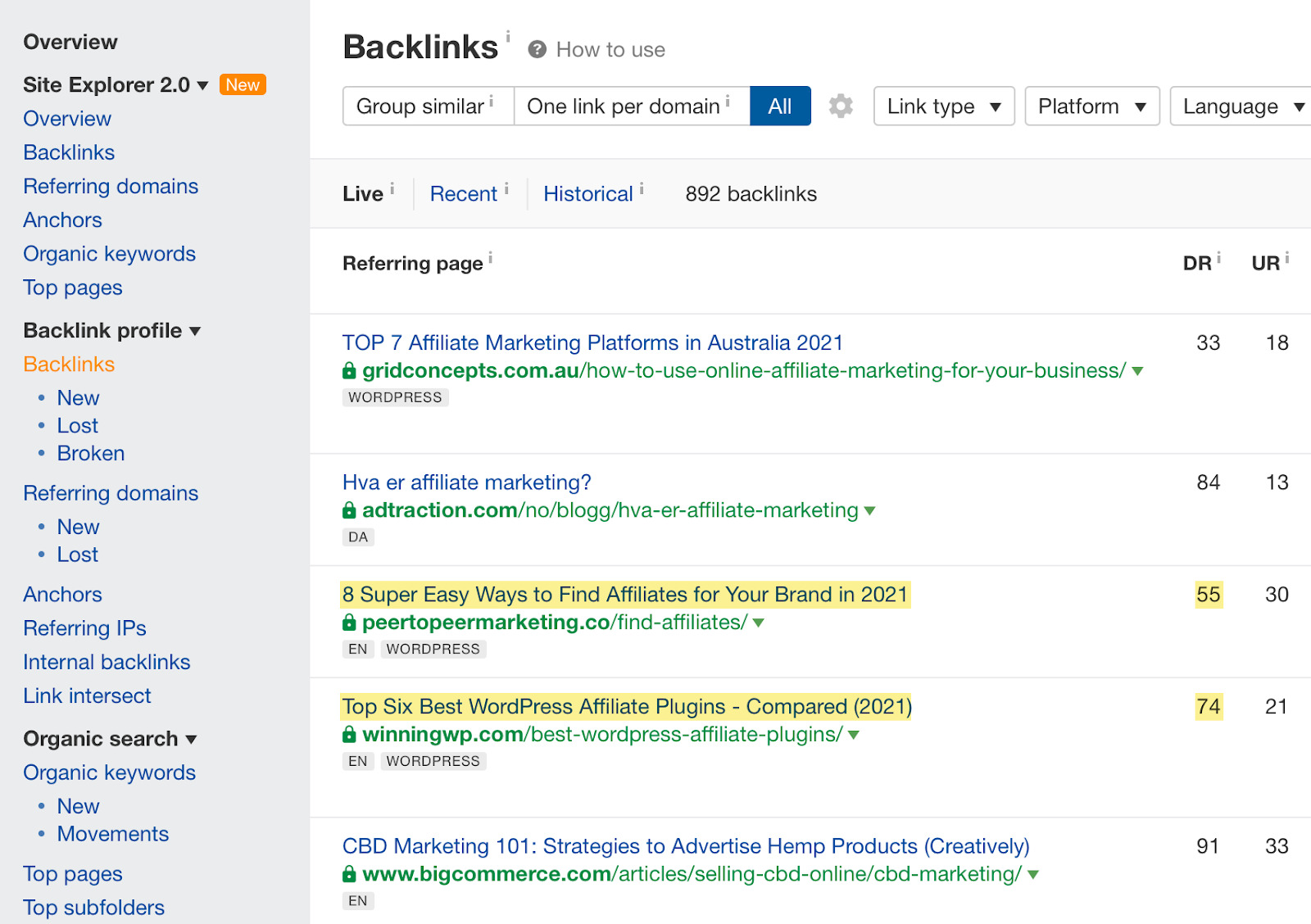How to Improve Your SEO Visibility for Higher Rankings in Search Engines
Understanding SEO Visibility

Analyzing SEO Visibility
In the vast realm of the internet, where countless websites vie for attention, SEO visibility acts as the shining beacon that guides lost souls to the virtual shores of your online kingdom. But what exactly is SEO visibility? And how can you harness its power to conquer the search engine rankings?
In this article, we embark on a journey to unravel the mysteries of SEO visibility. Drawing from personal experiences and industry insights, we’ll equip you with the knowledge to navigate the treacherous waters of search engine optimization and claim your rightful place among the digital elite.
SEO Visibility
Imagine a world where your website thrives, organic traffic flows like a roaring river, and your brand stands tall, casting a shadow over your competitors. This is the world that SEO visibility unlocks. It’s the secret ingredient that spices up your online presence, captivating search engines and captivating users.
You can assess your website’s overall search visibility by employing a tool such as SEMrush. This overall metric considers all your rankings and provides a visibility score based on every individual keyword you are ranked for.

Improving Website’s Overall Search Visibility – Utilizing SEMrush to analyze and boost SEO performance
Keywords
Our adventure begins with keywords, the compass that guides you through the labyrinth of search engine algorithms. Keyword research is the foundation upon which SEO visibility is built. It’s like searching for hidden treasure, sifting through a mountain of possibilities to find those golden nuggets that will lead you to the top of the search results.
Pro tip: Use keyword research tools like Google Keyword Planner and SEMrush to unearth high-volume keywords with untapped potential.
Mastering On-Page SEO
Once armed with your prized keywords, it’s time to perform a bit of on-page sorcery. From crafting captivating meta tags to sprinkling keyword-rich content throughout your website, on-page optimization is the spell that enchants search engines, luring them to showcase your webpages in all their glory.
But beware, young apprentice! Content is king in the realm of SEO visibility. Engage your audience with captivating tales, useful tips, and thought-provoking insights. Deliver value, and the search engines shall reward you with higher rankings.
Technical SEO
As we delve deeper into our quest, we encounter the enigmatic realm of technical SEO. It’s the invisible hand that ensures your website’s smooth sailing through the digital realm. Website speed, mobile responsiveness, and crawlability are the holy trinity that appeases the search engine gods.
Remember, dear reader, to structure your website with the finesse of a master architect. A well-organized site structure, clean URL structure, and the wise implementation of schema markup shall grant you favor in the eyes of the almighty search engine bots.
Off-Page Optimization and Link Building
Off-page optimization and link building are crucial components of an effective SEO strategy. While on-page optimization focuses on improving your website’s content and structure, off-page optimization expands your online presence. Link building involves acquiring high-quality backlinks from reputable websites, signaling to search engines that your site is authoritative and trustworthy. This not only helps increase your search engine rankings but also drives organic traffic to your website. Off-page optimization also encompasses various activities like social media marketing, content marketing, and influencer outreach, all of which contribute to a well-rounded SEO strategy.
Local Domination
As our adventure nears its climax, we must not forget the importance of local SEO. When targeting specific regions or conquering local markets, the forces of local search become your most loyal soldiers. Claim your throne on Google My Business, enlist in local directory listings, and amass an army of positive online reviews.
Perfect Keywords to Improve Your SEO Visibility

Exploring Keywords – Delving into keyword research for SEO visibility
Understanding Your Target Audience
Just as a skilled archaeologist studies ancient civilizations, we must first delve into the minds of our audience. Boldly step into their shoes, decipher their desires, and uncover the words they use when searching for answers. Are they seeking information, making a purchase, or looking for solutions to their problems? By truly understanding their intentions, we can embark on our keyword quest with a clear direction.
Brainstorming and Creativity
In the realm of keyword research, creativity is the secret weapon that sets us apart from the competition. Unleash your imagination and let the ideas flow like a river of inspiration. Create a list of seed keywords that are relevant to your niche or industry. Explore variations, synonyms, and related terms that resonate with your target audience.
Tools of the Trade
While our personal experiences and creativity are invaluable, we cannot ignore the power of technology in our keyword expedition. A trusty arsenal of keyword research tools awaits us, ready to provide valuable insights. Tools like Google Keyword Planner, SEMrush, and Ahrefs will unveil the search volume, competition, and potential of our chosen keywords.
To assess visibility for an individual keyword, input the keyword in Ahrefs’ Keywords Explorer and navigate to the Traffic Share by Domains report. The “Share” column will provide you with an estimate of your search visibility for that specific keyword.

Exploring Keywords with Ahrefs to Improve SEO Visibility
Competitor Analysis
In the wild jungles of the internet, understanding our competitors is crucial. Strategically analyze the keywords they are targeting, their ranking positions, and the content they have created. This knowledge will guide us in crafting a unique approach that surpasses their efforts. Remember, we aim to stand out, not blend in.
Spotting Valuable Keywords
Long-Tail Keywords
In the vast sea of keywords, long-tail gems shimmer with promise. These longer, more specific phrases may have lower search volumes, but they are often easier to rank for and attract highly targeted traffic. Delve into the depths of long-tail keywords that align with your niche. Uncover the questions your audience seeks answers to, and provide them with valuable content that satisfies their thirst for knowledge.
Balancing Search Volume and Competition
As keyword researchers, we must tread the delicate tightrope between search volume and competition. High-volume keywords may appear tempting, but they often come with fierce competition. Seek the sweet spot where search volume meets a reasonable level of competition. These mid-range keywords offer a greater chance for visibility and allow us to gain a foothold in the search engine battleground.
Optimize for search intent
In our keyword odyssey, we must decipher the intent behind the search queries. Are users seeking information, ready to make a purchase, or looking for a specific service? By understanding user intent, we can craft content that fulfills their needs and aligns with their search queries. Empathize with their journey and become the trusted source they turn to.
Implementing Your Keyword Arsenal for Search Visibility
“Content is the reason search began in the first place.” – Lee Odden, CEO of TopRank Marketing
Creating Engaging Content
Keywords alone are not enough to conquer the search engine realm. Weave your chosen keywords naturally into compelling, engaging content. Create articles, blog posts, or product descriptions that not only rank well but also captivate your audience. Remember, behind every keyword lies a human searching for answers, inspiration, or solutions.
On-Page Optimization
As we fortify our webpages, we must not overlook the power of on-page optimization. Bolster your meta tags, headers, URLs, and image alt text with carefully selected keywords. Ensure a seamless user experience with a well-structured website, fast loading times, and mobile responsiveness. A harmonious blend of keyword optimization and user-centric design will pave the path to search engine glory.
The Basis of Digital Success
The Need for Speed
In the lightning-fast realm of the internet, speed reigns supreme. Boldly optimize your website for swift and seamless performance. Implement techniques such as caching, minification, and content delivery networks (CDNs) to ensure your visitors reach their desired destination in the blink of an eye. Speed not only delights users but also catches the attention of search engine crawlers, accelerating your ascent in the rankings.
Website’s Mobile-Friendliness
In the mobile-dominated era, catering to the needs of smartphone users is paramount. Embrace the power of responsive design to provide a seamless experience across all devices. Craft layouts that adapt fluidly to different screen sizes, ensuring your content shines brightly on every smartphone, tablet, or desktop.
Google currently lowers the rankings of websites that lack mobile optimization. You can use Google’s own tool to determine if your site is appropriately optimized for mobile devices.

Conducting a mobile-friendly test to enhance website performance on mobile devices
The Technical Enigma of Google Search Engine Rankings
The Challenge of Crawlability
To win favor with search engines, your website must be an open book, easily explored by their tireless crawlers. Master the art of crawlability by creating a logical site structure, complete with a well-organized hierarchy of URLs. Craft an XML sitemap to guide search engine bots on their journey through your digital realm. Embrace the power of internal linking, creating a web of interconnected pages that leaves no corner unexplored.
Schema Markup
Prepare to cast a magical spell upon your website with the enigmatic power of Schema markup. This structured data language provides a roadmap for search engines, unveiling the true meaning behind your content. Infuse your pages with rich snippets, enabling search engines to display additional information in search results. Delight users with eye-catching review stars, event details, and recipe information. The power of Schema markup will captivate both search engines and users, elevating your website to new heights.
URL Mastery
Your website’s URLs are not mere strings of characters; they are the breadcrumbs that guide users and search engine crawlers alike. Craft concise, descriptive URLs that reveal the essence of each page. Implement keyword-rich slugs that highlight the topic at hand. Avoid complex parameters or cryptic symbols that may confuse the wandering souls of the internet. With each well-structured URL, you weave a thread that strengthens your website’s visibility.
Comparison of SEO Visibility Metrics and Measurement
| Aspect | Definition | Importance | Metrics & Tools | Measurement Process |
|---|---|---|---|---|
| Definition | A measure of a website’s presence in search engine results, often combining keyword rankings and search volume. | Indicates how easily a site is found. | Keyword rankings, search volume, click-through rates (CTR). | Aggregate rankings and visibility scores. |
| Importance | High SEO visibility leads to more organic traffic, brand exposure, and potential conversions. | Key for online success and competing effectively. | Improves website’s overall performance and reach. | Drives better search engine performance. |
| Metrics & Tools | 1. Keyword Rankings: Tracking positions for target keywords. 2. Search Volume: The number of searches for specific keywords. 3. CTR: The percentage of users clicking on your link after seeing it. | 1. Rank tracking tools (e.g., SEMrush, Ahrefs). 2. Keyword research tools (e.g., Google Keyword Planner). 3. Google Search Console. | 1. Monitor keyword movements and changes. 2. Analyze search volume trends. 3. Examine CTR for improved optimization. | Regular monitoring and analysis are crucial. |
| Measurement Process | 1. Identify target keywords. 2. Monitor keyword rankings over time. 3. Monitor search volume and fluctuations. 4. Analyze CTR data for improvement. | Consistent measurement and analysis are key. | 1. Track ranking changes. 2. Understand keyword trends. 3. Improve CTR through meta optimizations. | Regularly track changes and trends |
Customize Your Online Strategy for Improved Search Engine Visibility
Embrace Your Industry’s Unique Demands
Every industry possesses its own set of challenges and nuances. Embrace the unique demands of your industry and tailor your Technical SEO efforts accordingly. Discover the specific technical optimizations that set your niche ablaze. Whether it’s the intricacies of e-commerce platforms or the requirements of news websites, delve into the depths of your industry to gain a competitive advantage.
Get more backlinks
There’s no denying it: if you aim to boost your search engine visibility, backlinks are essential. However, not just any backlinks will suffice. It’s crucial to concentrate on acquiring links from websites within your niche. While various link-building strategies exist, a solid approach is to locate a similar page with numerous backlinks but of lesser quality, and then approach those linking to the inferior content and request that they link to your page instead.
Here’s a step-by-step guide on how to do it effectively:
- Identify Competing Pages: Start by identifying pages within your niche that are similar to the content on your website. These pages should ideally have a substantial number of backlinks but may not be of the highest quality.
- Use Ahrefs’ Site Explorer: Ahrefs is a powerful SEO tool that can help you with this process. Input the URL of the comparable page you’ve identified into Ahrefs’ Site Explorer. Once you’re on Ahrefs, navigate to the Backlinks report for the page you’ve entered. This report will show you all the websites that are linking to the comparable page.
- Analyze Backlinks: Examine the list of backlinks to the comparable page. Look for the reasons why websites are linking to it. Common reasons may include informative content, useful resources, or valuable insights.
- Contact Linking Websites: Now, reach out to the websites linking to the comparable page. Craft a polite and personalized email or message, explaining why your content is more valuable, up-to-date, or comprehensive. Highlight how linking to your page would be beneficial to their audience.
- Offer Value: Emphasize what value your content brings and how it can enhance the user experience on their site. Make it clear that you are not just asking for a favor but genuinely offering something valuable.
- Build Relationships: Building relationships with webmasters and site owners can be a long-term strategy for continuous link acquisition. Engage with them on social media, comment on their blog posts, or collaborate on projects when possible.
- Monitor Progress: Keep track of your outreach efforts and the responses you receive. Some websites may agree to link to your content immediately, while others might require follow-ups. Be patient and persistent.

Boost Your Website’s SEO Visibility with More Backlinks
By focusing on acquiring relevant, high-quality backlinks within your niche and following these steps, you can steadily improve your search engine visibility and drive organic traffic to your website.
Never Underestimate the Power of Analytics
In the realm of Technical SEO, knowledge is power. Harness the might of Google Analytics and Google Search Console to monitor your website’s performance. Unveil the mysteries of user behavior, track your keyword rankings, and uncover opportunities for improvement. Dive into the data ocean, using its waves of insights to guide your SEO ship to success.
The Rise of Local Search
Embrace the Local Digital Landscape
In a world where global connectivity intertwines with local communities, harnessing the power of local search is paramount. As the internet becomes more personalized and geographically focused, businesses must adapt and cater to the unique needs of their local audience. Boldly step into the shoes of your local customers, envision their desires, and unlock the key to their hearts through Local SEO.
The Significance of Google My Business
Google My Business (GMB) is the crown jewel of Local SEO. Embrace this powerful platform to claim your digital territory on Google Maps and the search engine results page. Create a compelling GMB profile that showcases your business’s vital information, such as address, phone number, and hours of operation. Engage with your customers by responding to reviews and providing timely updates. A well-optimized GMB profile acts as a beacon, guiding local customers to your doorstep.
The Local Directory Listings
In the labyrinth of local search, local directory listings serve as the lifeblood of your digital ecosystem. Cultivate your online presence by submitting your business information to reputable directories such as Yelp, Yellow Pages, and TripAdvisor. Ensure that your details are consistent across all listings, creating a harmonious digital footprint that search engines can trust. These directory listings not only boost your visibility but also provide valuable backlinks to your website.
Localizing Your Keywords
Unlock the power of localized keywords, the language that speaks directly to the hearts and minds of your local customers. Weave these keywords into your website content, meta tags, and headings. Craft location-specific landing pages that cater to the unique needs and preferences of your local audience. By speaking their language, you establish a connection that transcends digital boundaries.
The Rise of Online Reviews
In the hyperlocal arena, online reviews are the currency that can make or break your business. Encourage your satisfied customers to leave glowing reviews on platforms such as Google, Yelp, and Facebook. Respond to reviews promptly, showing appreciation for positive feedback and addressing any concerns with empathy and professionalism. A stellar reputation not only attracts new customers but also sends a positive signal to search engines, boosting your local rankings.
Dominating the Local Digital Landscape
The Importance of Hyperlocal Content
In the realm of Local SEO, content is king, and hyperlocal content is the crown jewel. Craft engaging blog posts, articles, and resources that are specifically tailored to your local audience. Share stories, insights, and tips that resonate with their daily lives. Showcase local events, news, and partnerships to establish your authority and connect with the community on a deeper level.
The Power of Social Media
Social media platforms act as the digital town square, where local communities gather and interact. Harness the power of platforms like Facebook, Instagram, and Twitter to amplify your local presence. Engage with your followers, share valuable content, and create a sense of community. Utilize location-specific hashtags and geotags to connect with local users and boost your visibility in the hyperlocal realm.
SEO Visibility Strategies for the Future
Voice Search
Imagine a world where we communicate with our devices as effortlessly as we do with our fellow humans. Boldly embrace the rise of voice search, where users rely on virtual assistants like Siri, Alexa, and Google Assistant to find information. Optimize your content for conversational queries by including natural language and long-tail keywords. Create FAQ pages that address common voice search queries, and consider incorporating structured data to enhance your chances of appearing in voice search results.
Mobile-First Indexing
The world has shifted to the palm of our hands, and mobile devices have become the primary gateway to the digital realm. Adapt to the era of mobile-first indexing, where search engines prioritize the mobile version of your website. Ensure your website is responsive and provides a seamless user experience across all devices. Prioritize mobile page speed and optimize your content for the smaller screens that dominate our lives. Remember, the thumb is now the ruler of the digital kingdom.
Visual Search
In a world overflowing with images, visual search emerges as a powerful tool that enables users to find what they seek with a simple image. Embrace the visual revolution by optimizing your images with descriptive alt text, captions, and relevant filenames. Consider implementing visual search features on your website or leveraging platforms like Pinterest and Google Lens to showcase your visual content. As the saying goes, a picture is worth a thousand searches.
FAQ: How to Improve Your SEO Visibility Score
What is a visibility score in SEO, and why is it important?
A visibility score in SEO refers to a metric that measures how visible your website is in organic search results. It’s important because it gives you an overview of how well your site ranks and performs in search engines.
How is the SEO visibility score calculated?
The SEO visibility score is calculated by taking into account various factors like keyword rankings, search volume, and click-through rates for your website’s pages in search engine results.
What role do SEO tools play in measuring visibility?
SEO tools like Moz, SEMrush, and Ahrefs provide insights into your website’s visibility by analyzing your keyword rankings, search traffic, and other relevant data.
What does it mean to have high visibility in search engine results?
Having high visibility means that your website’s pages rank well in search engine results, increasing the likelihood of users finding and clicking on your content.
Can a website have a visibility score of 0?
Yes, a website can have a visibility score of 0 if it’s not ranking for any keywords or if it’s not indexed by search engines.
How can you improve your website’s search visibility?
Improving search visibility involves implementing effective SEO strategies, optimizing your website’s content and structure, targeting relevant keywords, and building high-quality backlinks.
What is the relationship between visibility and ranking factors?
Visibility is closely tied to ranking factors such as keyword optimization, quality of content, website speed, mobile-friendliness, and user experience. A strong focus on these factors can positively impact your visibility in search results.
How does search intent affect SEO visibility?
Understanding search intent helps you create content that aligns with what users are looking for, which can lead to higher click-through rates and improved visibility in relevant search results.
Is a high visibility score a guarantee of the first page of Google?
While a high visibility score increases your chances of ranking on the first page of Google, it’s not a guarantee. Other factors like competition, location, and search algorithms also play a role.
What are some common ways to track and monitor your website’s visibility?
You can track and monitor your website’s visibility by using SEO tools that provide visibility metrics, regularly checking keyword rankings, monitoring changes in search traffic, and analyzing your site’s performance in search engine results pages.
What does it mean to rank in the top search results?
Ranking in the top search results refers to your website’s pages appearing on the first page of search engine results for specific keywords, increasing their visibility to users.
How is the visibility of a website calculated?
The visibility of a website is calculated by considering its keyword rankings, search volume, and click-through rates to determine how well it performs in search engine results.
What is a website’s SEO visibility, and why is it important?
A website’s SEO visibility is a metric that indicates how well it performs in search engine results. It’s important because higher visibility means increased organic traffic and potential customers.
How can you improve your site’s SEO visibility?
You can improve your site’s SEO visibility by employing effective SEO strategies such as optimizing content, improving site structure, using relevant keywords, and building authoritative backlinks.
How does Google’s search algorithm affect a site’s visibility?
Google’s search algorithm determines how websites are ranked in search results. Understanding and adhering to its guidelines can positively impact your site’s visibility.
What is domain visibility, and why does it matter?
Domain visibility is the overall visibility of your entire website in search engine results. It matters because a higher domain visibility indicates that multiple pages on your site are performing well in search results.
How can a sudden loss of visibility impact a website’s performance?
A sudden loss of visibility can lead to decreased organic traffic, lower click-through rates, and potential revenue loss for a website.
How does search ranking relate to SEO domain visibility?
Search ranking is a key factor that contributes to SEO domain visibility. Higher rankings for relevant keywords result in improved domain visibility.
What role does an SEO audit play in improving website visibility?
An SEO audit helps identify issues that may be affecting your website’s visibility, providing insights to optimize content, fix technical errors, and enhance the overall SEO performance.
Can you explain the concept of visibility drop and its significance?
A visibility drop refers to a sudden decrease in a website’s performance in search engine results. It’s significant because it can indicate algorithmic changes, penalties, or technical issues that need to be addressed to regain visibility.
© PhoenixProject, with full or partial copying of the material, a link to the source is required.

Comments: 0